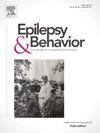慢性疾病生活质量评定工具QLICD-EP (V2.0)中癫痫量表的开发与验证:一项多中心纵向研究
IF 2.3
3区 医学
Q2 BEHAVIORAL SCIENCES
引用次数: 0
摘要
目的建立并评价《慢性疾病生活质量评价工具体系QLICD-EP(V2.0)》中的癫痫量表。方法采用模块化方法和程序化决策程序,通过多次专题讨论和焦点小组讨论,开发QLICD-EP(V2.0)。采用癫痫患者治疗前后三次生活质量(QOL)测量数据对量表的心理测量特性进行信度、效度和反应性评价。结果总量表的Cronbach 's α系数为0.902。总量表的重测信度为0.913,总量表的ICC(95% CI)为0.953(0.928,0.969)。通过结构方程模型进行相关分析和验证性因子分析,验证了本研究具有良好的结构效度。相关分析显示,以SF-36健康调查问卷为标准具有较好的标准相关效度。配对t检验结果显示,特殊心理方面有统计学意义(P <;0.05),标准反应均值(SRM)为0.31,其他各领域、各方面差异无统计学意义,SRM < 0.50,为低效应。结论qlicd - ep (V2.0)可用于临床评价PWE的生活质量。为精准医疗提供科学依据,为全球健康做出贡献。本文章由计算机程序翻译,如有差异,请以英文原文为准。
Development and validation of the epilepsy scale among the system of quality of life instruments for chronic diseases QLICD-EP (V2.0):A multicenter longitudinal study
Objectives
To develop and evaluate the epilepsy scale among the System of Quality of Life Instruments for Chronic Diseases QLICD-EP(V2.0).
Methods
The QLICD-EP(V2.0) was developed based on a modular approach and programmed decision procedures with multiple nominal and focus group discussions. The data measuring quality of life (QOL) three times before and after treatment of patients with epilepsy (PWE) was used to evaluate the psychometric properties of the scale, including reliability, validity, and responsiveness.
Results
The Cronbach’s α coefficient of the total scale was 0.902. The test–retest reliability of the total scale was 0.913, and the ICC(95 %CI) of the total scale was 0.953(0.928,0.969). Correlation and confirmatory factor analyses by the structural equation model confirmed good construct validity. Correlation analysis showed good criterion-related validity when using the Short Form-36 Health Survey (SF-36) as a criterion. The paired t-test results showed that the special mentality facet was statistically significant (P < 0.05) before and after the treatment with standard response mean (SRM) being 0.31, there was no statistical significance in other domains and facets with SRM being less than 0.50, which was a low effect.
Conclusion
QLICD-EP (V2.0) can be used to clinically assess the QOL of PWE in China. Providing a scientific basis for precision medicine and contributing to global health.
求助全文
通过发布文献求助,成功后即可免费获取论文全文。
去求助
来源期刊

Epilepsy & Behavior
医学-行为科学
CiteScore
5.40
自引率
15.40%
发文量
385
审稿时长
43 days
期刊介绍:
Epilepsy & Behavior is the fastest-growing international journal uniquely devoted to the rapid dissemination of the most current information available on the behavioral aspects of seizures and epilepsy.
Epilepsy & Behavior presents original peer-reviewed articles based on laboratory and clinical research. Topics are drawn from a variety of fields, including clinical neurology, neurosurgery, neuropsychiatry, neuropsychology, neurophysiology, neuropharmacology, and neuroimaging.
From September 2012 Epilepsy & Behavior stopped accepting Case Reports for publication in the journal. From this date authors who submit to Epilepsy & Behavior will be offered a transfer or asked to resubmit their Case Reports to its new sister journal, Epilepsy & Behavior Case Reports.
 求助内容:
求助内容: 应助结果提醒方式:
应助结果提醒方式:


